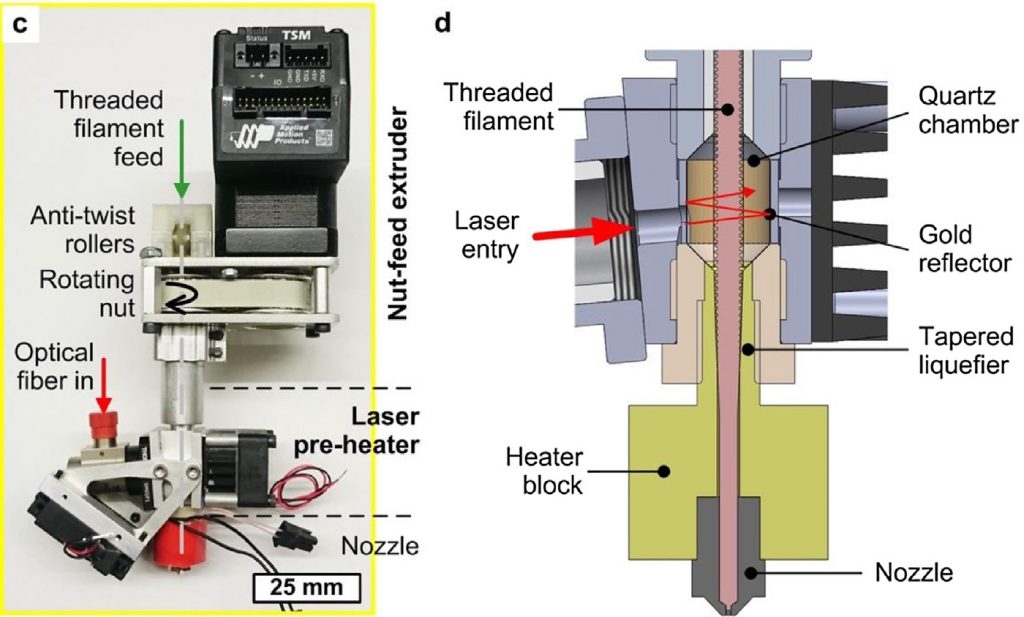Professor John Hart and Jamison Go of the Massachusetts Institute of Technology (MIT) Mechanosynthesis Group have published an article demonstrating an improved FFF 3D printing process that leaves benchmark 3D printers in the dust.
Named ‘FastFFF’, (Fast Fused Filament Fabrication) the method is powered by a souped-up printhead and a faster gantry system, producing objects at a rate around seven times faster than your average desktop 3D printer. Don’t believe us? Check out the video below.
From hours to minutes
Aware of the limitations of current desktop FFF 3D printers, a number of projects are looking for ways to speed the process and produce complex objects in minutes rather hours. Most recently, a team at the University of Michigan shared their algorithm capable of cutting print times in half. New 3D printing methods have also introduced higher production speeds, but they often lack the low-cost economics of an average FFF.
By combining high speeds with cost-effective materials Hart and Go’s FastFFF process has the potential to give 3D printer users the best of both worlds.
Shifting up a gear (with added lasers)
In place of pinch wheel gears, filament is fed through the FastFFF extruder using a screw-based system. A laser heated polymer liquefier is added to the print head, and this is moved by a servo-driven parallel gantry system, achieving “high extrusion force, rapid filament heating, and fast gantry motion.”

With these modifications, the FastFFF 3D printer is capable of achieving a volumetric build rate of 127cm cubed per hour, which is, according to the authors “approximately 7-fold greater than commercial desktop FFF systems, at comparable resolution.” At max speed, the extrusion rate is up to 14 times greater than benchmark rates recorded in a previous study from the Mechanosynthesis Group.
Commercial availability
Of course, the true potential of FastFFF process will only be fully realised if the system can be made commercially available. The researchers have said that they are considering options to bring the 3D printer market, looking to potentially set up a spin off company for the machines, or link with an existing manufacturer. In further development, the team also hope to be able adapt the process to work with high-temperature thermoplastics, like PEEK, and composite materials.
Hart and Go’s research is published in Additive Manufacturing journal volume 18 under the title Fast Desktop-Scale Extrusion Additive Manufacturing.

Never miss out on the latest 3D printing research – sign up to the 3D Printing Industry newsletter, follow us on Twitter, and like us on Facebook.
Get involved with 3D printing events near you here.
Featured image shows a moving gif of “Fast desktop-scale extrusion 3D printing”. Clip via Mechanosynthesis Group, MIT on YouTube



